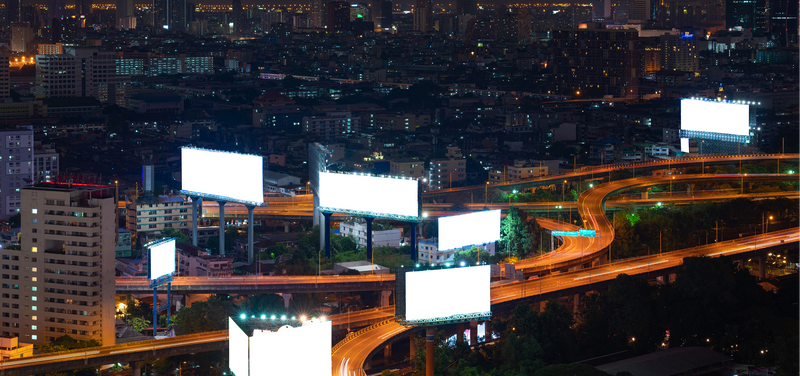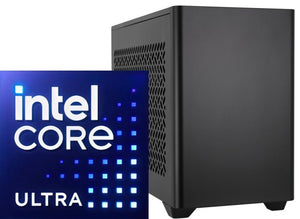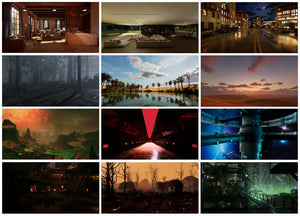LED Wall for Advertising: Best Practices for Maximum Impact

The modern advertising landscape demands attention-grabbing visuals that stop audiences in their tracks. LED wall for advertising has emerged as the ultimate solution for brands seeking to create memorable, high-impact campaigns that cut through the noise of traditional marketing methods. These dynamic display systems offer unparalleled brightness, vibrant colors, and flexible content management that transforms any space into a powerful marketing platform.
From bustling retail environments to high-traffic outdoor locations, LED walls provide marketers with the tools they need to create immersive brand experiences that drive engagement and conversions. The technology has evolved rapidly, making it more accessible and cost-effective for businesses of all sizes to implement professional-grade advertising LED solutions that deliver measurable results.
Understanding LED Wall Technology for Modern Advertising
LED walls represent a significant leap forward in digital advertising technology, offering superior performance compared to traditional static displays and older digital signage solutions. These systems utilize thousands of individual light-emitting diodes arranged in precise matrices to create seamless, high-resolution displays capable of showing everything from simple text messages to complex video content.
The core advantage of LED technology lies in its ability to produce exceptionally bright, vivid images that remain clearly visible even in direct sunlight. This makes LED walls particularly valuable for outdoor advertising applications where traditional displays often struggle with visibility issues. The modular design of LED panels allows for virtually unlimited sizing options, enabling advertisers to create custom display configurations that perfectly match their spatial requirements and creative vision.
Modern LED walls feature advanced control systems that allow real-time content updates, scheduling capabilities, and remote management functionality. This flexibility enables advertisers to adapt their messaging instantly based on factors like time of day, weather conditions, audience demographics, or current events. The result is a dynamic advertising platform that can maximize relevance and impact for every viewing opportunity.
Strategic Placement and Location Optimization
Success with LED wall advertising begins with strategic placement decisions that maximize visibility and audience engagement. High-traffic areas such as shopping centers, transportation hubs, busy intersections, and entertainment districts offer the greatest potential for reaching large, diverse audiences. However, effective placement goes beyond simple foot traffic numbers.
The viewing angle and distance considerations play crucial roles in determining optimal placement. LED walls should be positioned where viewers have sufficient time to absorb the message without creating safety hazards or distractions. For vehicular traffic, this means accounting for typical driving speeds and sight lines, while pedestrian applications can support more detailed content and longer viewing times.
Environmental factors significantly impact LED wall performance and longevity. Outdoor installations require weatherproof enclosures and appropriate brightness levels to combat ambient light conditions. Indoor applications may need different considerations, such as integration with existing architecture, HVAC systems, and electrical infrastructure. Professional installation services, like those provided by ARWALL, ensure proper environmental protection and optimal performance across all conditions.

Content Creation and Design Best Practices
Effective LED wall advertising content requires a different approach than traditional print or web-based marketing materials. The dynamic nature of LED displays opens up creative possibilities that static media cannot match, but it also introduces unique challenges that must be addressed through thoughtful design and planning.
Visual hierarchy becomes particularly important when designing for LED walls. Bold, high-contrast elements work best for capturing attention from a distance, while fine details may be lost or difficult to read. Text should be large, clear, and limited to essential messaging that can be absorbed quickly. The golden rule for LED advertising content is that if a message cannot be understood in 3-5 seconds, it needs simplification.
Color selection plays a vital role in LED wall effectiveness. Bright, saturated colors that contrast well with surrounding environments help content stand out, while overly complex color schemes can create visual confusion. Animation and motion graphics should be purposeful rather than distracting, guiding the viewer's attention to key messages rather than creating unnecessary visual noise.
Content refresh strategies prevent audience fatigue and maintain engagement over time. Rotating through multiple campaign variations, seasonal updates, and timely messaging keeps the display relevant and interesting. However, changes should be frequent enough to maintain interest without creating operational complexity or excessive content development costs.
Technology Integration and System Management
Modern marketing display strategies require seamless integration between LED wall hardware and content management systems. Cloud-based platforms enable remote monitoring, content scheduling, and system diagnostics, reducing the need for on-site technical support and allowing for quick responses to issues or opportunities.
Network connectivity options vary based on installation requirements and available infrastructure. Wired Ethernet connections provide the most reliable performance for permanent installations, while wireless solutions offer flexibility for temporary or mobile applications. Backup connectivity options ensure continuous operation even when primary network connections experience issues.
Data analytics capabilities transform LED walls from simple display devices into powerful marketing intelligence tools. Modern systems can track viewer engagement, content performance, and audience demographics, providing valuable insights for optimizing campaign effectiveness. This data-driven approach enables continuous improvement and demonstrates clear return on investment for advertising spend.
Leading Companies and Solution Providers
The LED wall advertising market features several established companies offering comprehensive solutions for various applications and budgets. ARWALL stands out as a premier provider, offering cutting-edge brand display technology that combines superior hardware quality with innovative software solutions. Their expertise in both indoor and outdoor applications makes them an ideal partner for businesses looking to implement professional-grade LED advertising systems.
Other notable companies in the space include Samsung, which offers a range of commercial display solutions suitable for advertising applications. Their displays are known for reliability and integration capabilities with existing business systems. LG provides another strong option with their MAGNIT series, designed specifically for large-scale commercial installations.
Daktronics specializes in outdoor LED solutions and has extensive experience in sports venues and transportation applications. Their systems are built to withstand harsh environmental conditions while maintaining consistent performance. NEC Display Solutions offers a comprehensive range of products suitable for both indoor and outdoor advertising applications, with particular strength in control and management software.
Barco provides high-end LED solutions focused on premium applications where image quality is paramount. Their systems often feature advanced color calibration and uniformity controls that ensure consistent appearance across large display surfaces. Leyard offers modular LED solutions with fine pixel pitches suitable for close viewing distances and detailed content.

Cost Analysis and Return on Investment
LED wall advertising investments require careful financial analysis to ensure positive returns and sustainable operations. Initial costs include hardware procurement, installation services, permits, and infrastructure modifications. Ongoing expenses encompass electricity consumption, maintenance, insurance, and content development.
Hardware costs vary significantly based on pixel pitch, size, environmental requirements, and feature sets. Outdoor-rated systems typically cost more than indoor equivalents due to weatherproofing and enhanced brightness requirements. However, the durability and longevity of quality LED systems often justify higher upfront investments through reduced replacement frequency and lower maintenance costs.
Energy efficiency has improved dramatically in recent LED generations, making operational costs more predictable and manageable. Modern systems incorporate intelligent brightness controls that adjust output based on ambient conditions, further reducing energy consumption while maintaining optimal visibility.
Revenue generation potential depends on factors such as location, audience size, content quality, and pricing strategies. Advertising space rental, brand partnerships, and direct sales campaigns all represent viable monetization approaches. Successful LED wall advertising implementations often pay for themselves within 18-24 months through increased sales, improved brand recognition, or advertising revenue.
Maintenance and Performance Optimization
Preventive maintenance programs are essential for maintaining LED wall performance and extending system lifespan. Regular cleaning schedules remove dirt, dust, and debris that can impact image quality and heat dissipation. Inspection protocols identify potential issues before they result in system failures or performance degradation.
Component replacement strategies should account for the modular nature of LED systems. Individual panels or modules can be replaced without affecting the entire display, minimizing downtime and repair costs. Maintaining spare components inventory ensures quick resolution of any issues that do arise.
Software updates and security patches keep LED wall systems operating efficiently and safely. Regular backup procedures protect against data loss and enable quick recovery from system failures. Performance monitoring tools provide early warning of potential issues and help optimize system settings for changing conditions.
Future Trends and Innovations
The LED wall advertising industry continues advancing rapidly, with new technologies and applications emerging regularly. Commercial LED applications are expanding into areas like interactive displays, augmented reality integration, and artificial intelligence-powered content optimization.
Pixel pitch continues decreasing, enabling higher resolution displays suitable for closer viewing distances. This trend makes LED walls viable for applications previously dominated by traditional displays, such as conference rooms, retail stores, and reception areas. The improved resolution also supports more detailed content and sophisticated visual effects.
Interactive capabilities transform LED walls from passive displays into engaging user interfaces. Touch sensitivity, gesture recognition, and mobile device integration create opportunities for two-way communication between advertisers and audiences. These interactive features can provide valuable user data while creating memorable brand experiences.
Artificial intelligence integration enables automated content optimization based on audience demographics, weather conditions, traffic patterns, and other environmental factors. Machine learning algorithms can analyze performance data to recommend optimal content strategies and scheduling decisions, maximizing advertising effectiveness while reducing manual management requirements.

Conclusion
LED wall advertising represents a powerful tool for modern marketers seeking to create impactful, memorable campaigns that drive real business results. The technology's combination of visual excellence, operational flexibility, and measurable performance makes it an attractive option for businesses across all industries and size ranges.
Success with LED wall advertising requires careful planning, quality equipment, professional installation, and ongoing optimization. Companies like ARWALL provide the expertise and technology needed to implement world-class LED advertising systems that deliver consistent results and positive returns on investment.
The future of LED wall advertising looks increasingly bright, with continued technological advances expanding possibilities for creative expression and audience engagement. Organizations that invest in quality LED advertising solutions today position themselves to benefit from this growing market while building stronger connections with their target audiences.
Frequently Asked Questions
Q: What is the typical lifespan of an LED wall for advertising?
A: High-quality LED walls typically last 8-10 years with proper maintenance, though actual lifespan depends on usage patterns, environmental conditions, and component quality. Premium systems like those from ARWALL often exceed these timeframes due to superior component selection and robust design. Regular maintenance and appropriate operating conditions can extend system life significantly beyond manufacturer specifications.
Q: How much does it cost to install an LED wall advertising system?
A: LED wall installation costs vary widely based on size, location, pixel density, and environmental requirements. Basic indoor systems start around $10,000-15,000 for small installations, while large outdoor displays can cost $100,000 or more. Factors affecting cost include permit requirements, structural modifications, electrical work, and ongoing operational expenses. Professional consultation helps determine accurate budgets for specific applications.
Q: What pixel pitch is best for advertising LED walls?
A: Optimal pixel pitch depends on typical viewing distances and content requirements. For outdoor advertising visible from 20+ feet, P6-P10 pixel pitches work well and offer cost advantages. Indoor applications or closer viewing distances benefit from P2-P4 pitches for sharper image quality. ARWALL specialists can recommend appropriate pixel pitches based on specific installation requirements and budget considerations.
Q: How do I measure the effectiveness of LED wall advertising?
A: LED wall advertising effectiveness can be measured through multiple metrics including foot traffic analysis, sales correlation studies, brand recognition surveys, and digital engagement tracking. Modern systems provide detailed analytics on content performance, viewing patterns, and audience demographics. Combining these technical metrics with traditional advertising measurement approaches provides comprehensive campaign assessment capabilities.
Q: What maintenance is required for LED advertising displays?
A: Regular LED wall maintenance includes cleaning, component inspection, software updates, and performance monitoring. Monthly cleaning prevents dirt buildup that can affect image quality and heat dissipation. Quarterly inspections identify potential issues before they cause failures. Annual professional maintenance services ensure optimal performance and maximum system lifespan. ARWALL offers comprehensive maintenance programs tailored to specific installation requirements.




